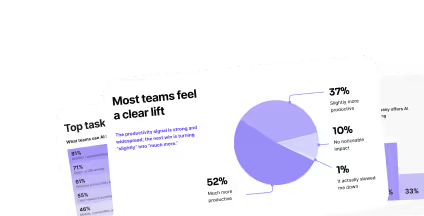My challenge: Elevating UX in our engineering-driven environment
As UX Manager at Vail Systems, my mission was clear yet challenging: establish a mature UX practice within an organization where engineering excellence has been our cornerstone for three decades. With my distributed team of designers embedded across various service offerings, I needed a systematic approach to skill development that could unite and elevate our capabilities.
In an engineering-focused company like ours, I needed to create visibility for UX expertise while developing a consistent design language across teams. I was manually assessing skills through multiple disconnected learning platforms, but the process was difficult to standardize.
Our company context: Mission-critical communication solutions
At Vail Systems, we provide enterprise-grade communication software that powers customer interactions for Fortune 500 companies across financial services, retail, hospitality, and telecommunications. Our suite of cloud-based solutions includes intelligent network routing, advanced call control, voice-driven AI assistance, and real-time analytics. All require intuitive interfaces despite complex underlying technology.

Business impact: The transformation journey
Implementing Uxcel Teams created immediate and lasting business impact across Vail Systems:
- Accelerated Product Development: Our improved design consistency reduced development cycles by eliminating rework caused by inconsistent UX patterns.
- Enhanced Client Satisfaction: Fortune 500 clients reported increased user adoption of our communication solutions due to more intuitive interfaces.
- Cross-Functional Efficiency: The common design language established through Uxcel reduced friction between engineering and design teams, streamlining implementation.
- Talent Retention: Three designers advanced to senior roles, strengthening our team continuity and reducing costly recruitment needs.
- Executive Recognition: UX achievements became highlighted in quarterly business reviews, positioning design as a strategic driver of company success.
The superpowers Uxcel unlocked for our team
Uxcel revealed five transformative capabilities that reshaped our design practice. Through structured learning paths, our team achieved remarkable certification milestones in short timeframes. The engagement tracking transformed how I support designers. Objective assessments gave way to data-driven coaching that addresses specific skill gaps.
Team camaraderie developed organically. Designers began sharing achievements across previously siloed product areas. They discussed challenging concepts and celebrated growth together. By participating alongside my team, I showed how the content integrated with our demanding schedules. This leadership involvement catalyzed adoption beyond my expectations.
Public recognition proved especially powerful. Achievements became celebrated moments in leadership meetings. This elevated design's visibility across the organization. It inspired others to engage with the platform. We witnessed a profound cultural transformation beyond skill development. Executive discussions incorporated UX perspectives. Previously isolated designers found their voice in cross-functional conversations.
Our evolution from fragmented learning to cohesive skill development changed our approach. We now create solutions differently for our Fortune 500 clients. Our UX practice has become an essential driver of business value at Vail Systems.
See how Vail System’s Design Team Skill Graph improved in 2 months:
My strategic insights for design leaders
Based on my experience at Vail Systems, I offer two key recommendations for fellow design managers:
- Champion Development, Do Not Just Manage It: Your role extends beyond tracking tasks. Actively mentor your team, hold them accountable for growth, provide premier resources, and visibly celebrate achievements. When leadership demonstrates investment in learning, teams respond with commitment.
- Engagement Transforms Tools into Culture: Simply providing access to a platform is not enough. Learn alongside your team, highlight real-world applications of new skills, and create opportunities to apply those skills in meaningful projects. This transforms learning from an obligation into a valued team practice.
The ripple effect: Beyond skill development
Perhaps the most significant outcome has been the elevated perception of UX across our organization. With quantifiable skill metrics and visible certification achievements, executive leadership at Vail Systems has positioned design as a strategic business function rather than a service role.
We are not just creating better designers. We are building a design-driven culture that influences how Vail Systems approaches innovation in our communication solutions. That transformation extends far beyond individual certification, fundamentally changing our competitive advantage in the enterprise communication space.





.svg)
.svg)
.svg)
.svg)
.svg)
.svg)
